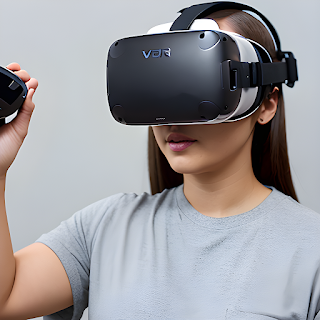Introduction:
In the dynamic realm of architecture, the convergence of Virtual Reality (VR) and Augmented Reality (AR) with Artificial Intelligence (AI) is reshaping the way architectural designs are visualized and experienced. This powerful fusion offers architects, designers, clients, and stakeholders the ability to engage with projects in unprecedented ways, creating a more interactive and informed design process. In this article, we will explore how AI algorithms are elevating VR and AR technologies in architectural visualization, enabling real-time adjustments, realistic simulations, and immersive walkthroughs.
The Marriage of VR, AR, and AI:
The combination of VR and AR with AI has unlocked new possibilities in architectural visualization. VR immerses users in entirely virtual environments, while AR overlays digital elements onto the real world. AI's role is to enhance the fidelity and responsiveness of these technologies, making the experience more dynamic and adaptable.
Real-Time Design Adjustments:
AI algorithms have the ability to analyze design parameters in real time and suggest adjustments that optimize various aspects of the design, such as space utilization, ergonomic considerations, and energy efficiency. These adjustments can be visualized immediately in the VR or AR environment, allowing architects to make informed decisions on the spot.
Realistic Simulations of Lighting and Materials:
AI-powered simulations bring designs to life by accurately replicating lighting conditions and material appearances. Through AI's data analysis capabilities, architects can input real-world data to simulate how different materials will react under varying lighting conditions, offering a more accurate representation of the final outcome.
Immersive Walkthroughs for Stakeholders:
VR and AR enable stakeholders to explore designs before construction even begins. By integrating AI, these experiences become even more immersive and interactive. AI algorithms can adapt the experience based on user preferences, highlighting specific design elements and responding to user interactions, providing a truly personalized and engaging experience.
Predictive Analytics for Design Optimization:
AI's predictive capabilities aid architects in making design decisions with a future-oriented approach. By analyzing historical data and trends, AI algorithms can provide insights into design choices that are likely to yield better long-term results, such as energy efficiency improvements or cost savings.
Streamlining Collaboration and Communication:
AI-assisted VR and AR visualization foster improved collaboration among project stakeholders. Design changes and ideas can be communicated more effectively, as AI helps translate complex architectural concepts into easily understandable visual representations, reducing misunderstandings and speeding up decision-making processes.
Challenges and Considerations:
While the synergy between AI, VR, and AR offers tremendous potential, there are challenges to address, such as data privacy, ethical AI use, and ensuring that the technology remains accessible and inclusive.
Conclusion:
The integration of AI algorithms into VR and AR architectural visualization marks a transformative leap in the field of architecture. By enabling real-time design adjustments, realistic material and lighting simulations, and immersive walkthroughs, AI enhances the creative process and facilitates more informed decision-making. As this technology continues to evolve, architects and designers have an unprecedented opportunity to revolutionize the way we visualize and interact with architectural designs, ultimately leading to better-designed and more user-centric built environments.

.png)
.png)
.png)
.png)

.png)